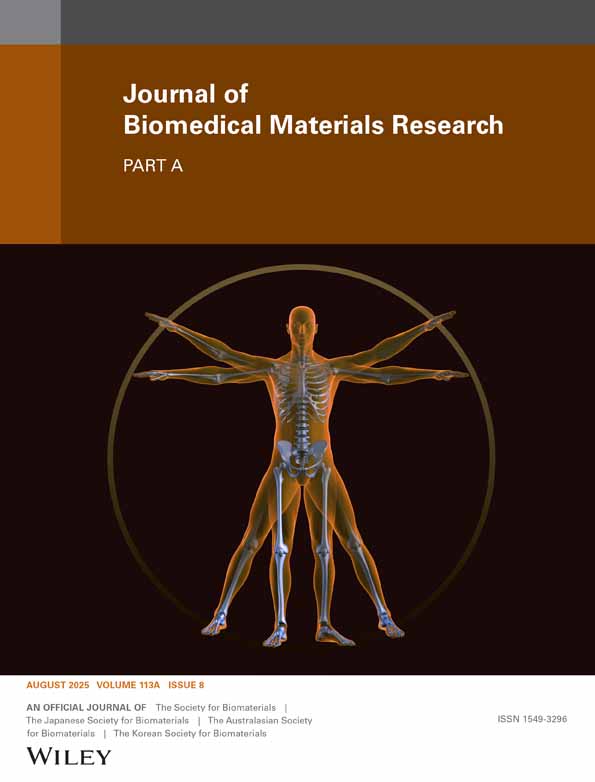In vivo response to starch-based scaffolds designed for bone tissue engineering applications
Abstract
Our purpose was to evaluate the in vivo endosseous response to three starch-based scaffolds implanted in rats (n = 54). We implanted the three scaffold groups; a 50/50 (wt %) blend of corn starch and ethylene-vinyl alcohol (SEVA-C), the same composition coated with a biomimetic calcium phosphate (Ca-P) layer (SEVA-C/CaP), and a 50/50 (wt %) blend of corn starch and cellulose acetate (SCA), all produced by extrusion with blowing agents, into distal femurs proximal to the epiphyseal plate, for 1, 3, or 6 weeks. Our results showed that at 1 week considerable reparative bone formed around all scaffold groups, although the bone was separated from the scaffold by an intervening soft tissue interfacial zone that comprised two distinct compartments: the surface of the scaffold was occupied by multinucleate giant cells and the compartment between these cells and the surrounding bone was occupied by a streaming fibrous-like tissue. The extracellular matrix of the latter was continuous with the extracellular bone matrix itself, labeled positively for osteocalcin and appeared mineralized by back-scattered electron imaging. All three scaffolds showed a similar tissue response, with the soft tissue interface diminishing with time. No bone contact was observed with SEVA-C at any time point, only transitory bone contact was observed with SEVA-C/CaP at 3 weeks, but SCA exhibited direct bone contact at 6 weeks where 56.23 ± 6.46% of the scaffold surface was occupied by bone. We conclude that all materials exhibited a favorable bony response and that the rapidly forming initial “connective tissue” seen around all scaffolds was a very early form of bone formation. © 2006 Wiley Periodicals, Inc. J Biomed Mater Res, 2006




